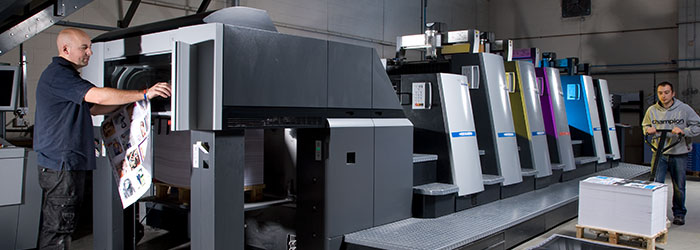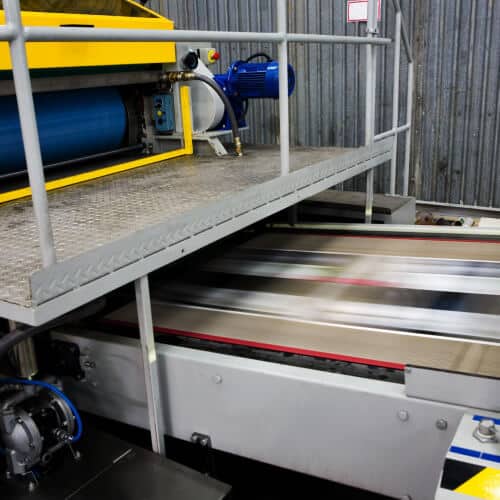Personalized Designs Enhanced Through litho printing
Wiki Article
A Comprehensive Overview to Understanding Litho Printing Methods
The world of litho printing, a technique originating from the late 18th century, is an interesting blend of background, innovation, science and art. Remain with us as we trip right into the exciting realm of litho printing.The Historic Development of Litho Printing
The historic trajectory of litho printing, a critical advancement in the realm of interaction, is a fascinating story of human resourcefulness. The procedure developed with the development of the rotary press, which greatly raised efficiency. Each stage of litho printing's development showcases humanity's unrelenting search of effectiveness and quality in visual communication.Deciphering the Scientific Research Behind Litho Printing Inks
Moving on in the exploration of litho printing techniques, the emphasis now shifts to the science behind litho printing inks. The make-up of these inks, their drying procedure, and shade mixing methods form the backbone of this complex art type. Recognizing these aspects is essential to understanding the craft and attaining the wanted print results.Make-up of Litho Inks
In lithographic printing, the essential function of litho inks can not be overstated. The structure of litho inks varies depending upon its purpose, yet usually, they include 2 primary components - pigments and cars. Pigments, the color-providing aspects, are carefully ground particles put on hold in the vehicle, a liquid that lugs the pigment onto the printing surface area. The vehicle is a complicated mixture of solvents, oils, and resins, which influence the ink's drying time, attachment, and gloss. In addition, various additives exist to enhance particular properties like circulation, drying out, and resistance to environmental results. Each component plays a critical part in the last print's high quality, making the specific formulation of litho inks an elaborate scientific research.Ink Drying Process
From the make-up of litho inks, interest transforms to the fascinating process of ink drying. The drying out process is vital, as it influences the last print's quality and long life. 2 key techniques are made use of in litho printing: oxidative drying out and absorption. Oxidative drying out entails the ink responding with oxygen airborne to develop a hard, dry movie. This method supplies a resilient finish, but can be slower compared to absorption. Absorption, on the other hand, entails the ink permeating right into the paper fibers, which is a much faster procedure yet can bring about less dynamic colors. The choice between these approaches depends on aspects such as print speed needs, the paper type used, and the preferred finish.Shade Mixing Techniques
While the drying out process plays a vital role in litho printing, the science of shade mixing techniques holds equivalent significance. This is a complicated procedure that includes the mindful mixing of primaries: cyan, magenta, and yellow, in differing proportions to achieve a vast range of colors. The enhancement of black ink, called 'essential', helps in managing the strength and deepness of the colors. The scientific research behind litho printing inks likewise considers the openness of the ink, which influences exactly how colors overlay and mix. To attain an efficient color mix, print experts need to additionally comprehend the complexities of ink actions, color theory, and the physical properties of the substrate on which the ink is used.The Art and Design Elements in Litho Printing
Litho printing breathes life right into art and style through its one-of-a-kind elements. Litho printing accommodates a variety of shades, making it possible for musicians to create lively and vibrant prints. This combination of precision and adaptability makes litho printing a favored choice for many musicians and designers.Modern Applications of Litho Printing Methods
Litho printing strategies have located comprehensive usage in the contemporary industrial sector. Its influence and significance remain to expand with the advent of new advancements and innovations in the area. This area will certainly discover these modern applications and the transformative function they play in the printing sector.
Industrial Litho Printing Uses
In today's digital age, one might wonder concerning the importance of conventional printing approaches. Yet, litho printing remains a crucial component of the business industry. High-volume printing jobs, such as the production of publications, newspapers, and packaging, depend on litho printing for its capacity to deliver remarkable photo quality and expense performance. The process, which involves moving an inked photo from a plate onto a rubber covering and then to the printing surface, offers unmatched consistency. This makes it ideal for work calling for a big print run. Litho printing likewise gives a broad shade range, above that of digital printing. This makes it the best option for tasks that require lively, top quality shade recreation.Technologies in Litho Printing
Pushing look at this website the boundaries of conventional strategies, modern developments have fueled a host of innovations in litho printing. These developments have not just boosted the top quality and efficiency of litho prints however additionally broadened its application scope. One famous development is digital litho printing, which incorporates the virtues of digital technology with litho's premium result. This crossbreed design offers faster setup times, minimized waste, and makes it possible for on-demand printing. An additional noteworthy development is the introduction of eco-friendly inks. These inks, made from veggie or soy-based services, have actually dramatically lowered the industry's environmental influence. litho printing. In addition, the advancement of sophisticated plate technology has streamlined the printing procedure, resulting in sharper images and enhanced color fidelity. These developments highlight the enduring relevance of litho printing in the modern-day globe.Checking out the Process of Litho Printing: Action by Step

Difficulties and Solutions in Contemporary Litho Printing

In spite of the accuracy and tradition that litho printing happily maintains, it is not without its set of contemporary obstacles. One of the most prevalent problems consist of the high initial configuration price, difficulty in printing variable data, and ecological worries due to chemical usage. Nonetheless, options are emerging as technology develops. Digital litho printing enables cost-effective short runs and simple modification, dealing with the problem of variable data. Environmentally-friendly inks and much safer plate-making processes mitigate environmental worries. Additionally, innovations in automation have lowered labor costs, further equalizing the lithography process. Therefore, while there are difficulties, the litho printing industry is proactively adjusting to satisfy them head-on, guaranteeing its importance in the future.
Conclusion
Finally, litho printing, with its abundant background and scientific ins and outs, holds a significant place in the print market. As the overview exposes, it's a synthesis of art and technology, with contemporary innovations ensuring its relevance. Nevertheless, the industry encounters challenges that call for innovative solutions, with top article a concentrate on automation and sustainability. The future of litho printing pivots on its capability to adjust to these changing demands, verifying its enduring value in an advancing market.
Report this wiki page